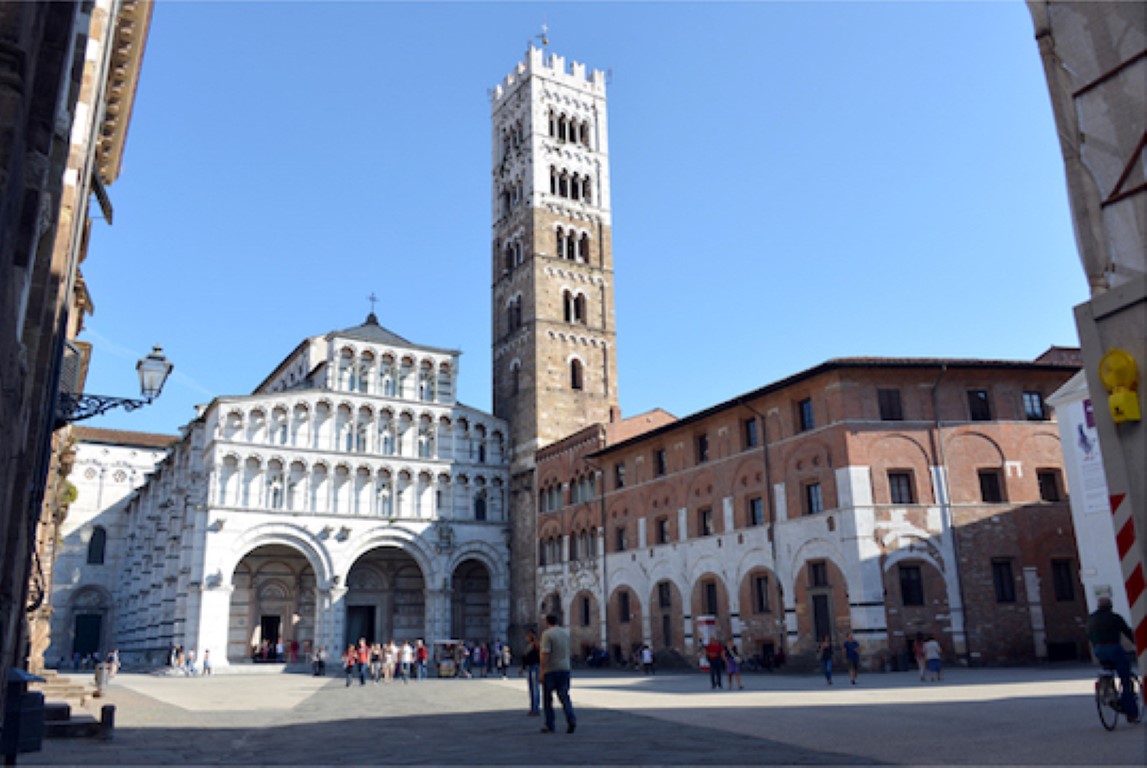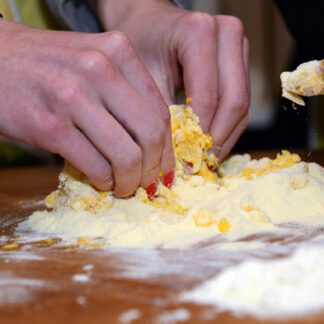
In January 2020, the city of Lucca, nicknamed the City of Churches, commemorated 950 years of the founding of its Cathedral, San Martino. Inside the cathedral, what was for centuries an object of veneration, by millions of pilgrims, the Holy Face (Volto Santo) will be restored, along with the beautiful funeral monument dedicated to Ilaria Del Carretto. Therefore, there are many shows, meetings, conventions and publications planned for 2020.
There is a long period of celebration planned, so that everybody has a chance to join in with the residents of Lucca and commemorate the importance of their Cathedral, consecrated on the 6th October 1070, as ordered by Pope Alexander II.
The Cathedral is positioned inside the city walls, on the southern side of the old city, situated in a wide square, between San Pietro Gate and Agorà City Library. Within the Cathedral, you can find many pieces of art, of which you can find, the Holy Face which is a wooden crucifix, and considered the symbol of Lucca’s Christian Church, and the marble sarcophagus, a masterpiece by Jacopo della Quercia, dedicated to Ilaria Del Carretto. Both pieces of art, as mentioned previously, will be restored in 2020.

In the posthumous book by Monsignor Giuseppe Ghilarducci, who was the former canon of San Martino Cathedral, the building is a protagonist of a troubled path along the centuries, passing through four architectural style changes. This fascinating book will be titled The Fourth Cathedral and published by Maria Pacini Fazzi Editore (Lucca).

There are many curiosities about the San Martino Cathedral, for example, on one of the main doors, you can find some holes; which were made to allow the pilgrims who were travelling along the Franciscan Road (Via Francigena), the chance to see the Holy Face from outside of the church. Paolo Guinigi, who was the head of the “Signoria di Lucca” and husband of Ilaria Del Carretto, commissioned a sarcophagus dedicated to his late wife. This commission was given to Jacopo della Quercia, an italian renaissance sculptor, and is found within the Cathedral, yet the body of Ilaria was buried in the San Francesco Church complex, so not within the Cathedral.
POPE ALEXANDER II
Born Anselmo da Baggio, (Baggio, 10 October 1015 – Rome, 21 April 1073) he studied at Scuola Cluniacense of Lanfranco di Pavia, at Nôtre Dame du Bec abbey in Normandy and was ordained as a priest in 1055.
In 1057 he was named the Bishop of Lucca, a title that he maintained during his papacy. As Bishop he ordered the renewal of the Cathedral.
He supported Ildebrando di Soana in fighting simony (paying to gain office) and clergical marriage. In Milan he also leaded the “pataria”, which was a popular movement aimed at reforming the clergy.
He became Pope Alexander II in 1061 and was the first Pope elected by a group of Church princes without the intervention of imperial power.

PAOLO GUINIGI
(Lucca, 1376 – Pavia, 1432) The Lord of Lucca for over thirty years, he was made Lord in 1400. As heir to the Castracani Family’s fortune, he was able to become Lord with merchant and artisan political support.
Pursuing a very careful wedding strategy, Paolo Guinigi consolidated his international reputation and prestige, thanks to the support of the Christian Catholic Church (in 1408 he got the famous Golden Rose from Pope Gregory XII) and Emperor Sigmund of Luxembourg, who made him a vicar and extended the title of Lord to his descendants.
After 1430, he became isolated against the power of the city of Florence, and was captured with his sons and transported to Pavia, where he died. Paolo Guinigi was a patron of many writers and artists, of which the renaissance sculptor, Jacopo della Quercia was one.
ILARIA DEL CARRETTO
Daughter of Carlo I Del Carretto (Marquis of Zuccarello) and Pomellina Adorno, she was the second of the four wives of Paolo Guinigi, Lord of Lucca. From this relationship ( the wedding was celebrated in 1403), were born two sons, Ladislao and Ilaria Minor (next wife of the Lord of Genoa). Unfortunately, Ilaria died during Ilaria Minor’s birth. The wonderful sarcophagus by Jacopo della Quercia, found in the Cathedral was commissioned by Paolo Guinigi and dedicated to his wife.

Ilaria Del Carretto is also mentioned in the works of celebrated Italian poets and writers: Gabriele D’Annunzio, Salvatore Quasimodo and Pier Paolo Pasolini.
In her honour, a bronze sculpture was dedicated in the medieval borough of Zuccarello (Savona province) in 2007, and positioned close to the southern entrance of the village.
Lastly, a few suggestions;
To check out the schedule of events you can visit the diocese’s website, but also feel free to ask us directly if you would like more detailed information. We arrange various tours and excursions in and about the city of Lucca, so if you have any questions, such as.
“Why has the Cathedral been restored and enlarged many times?” or “Why is a cathedral so huge?”
We have the answer, in the words of Archbishop Paolo Giulietti: “Cathedrals have always been in evolution, along the course of history. This one represents the heart around which we can spread many initiatives” and “Because it wants to accommodate everybody.” just as we do.
Did you like this article about Lucca? Continue to follow our blog and our social accounts (Come and See Italy, on Facebook, Instagram and YouTube) and subscribe to our Newsletter, to receive the lastest news.
We look forward to receiving your comments and pictures of the esperience you have lived!







